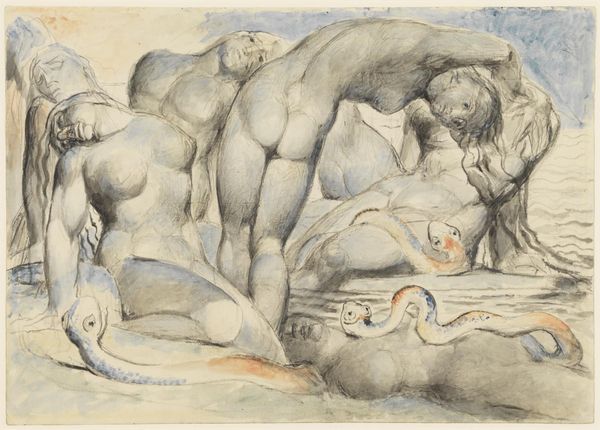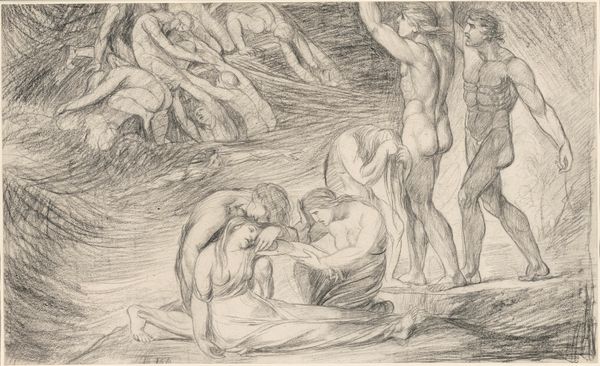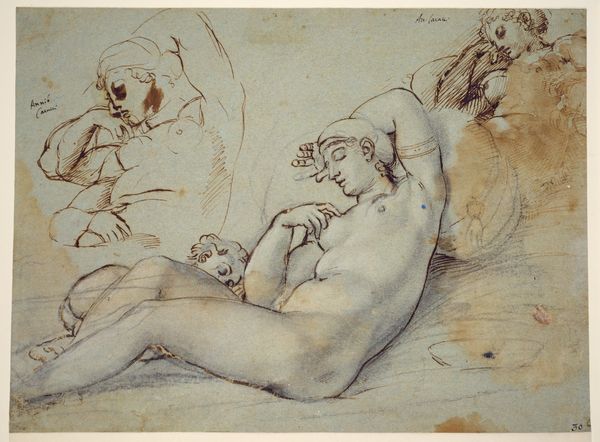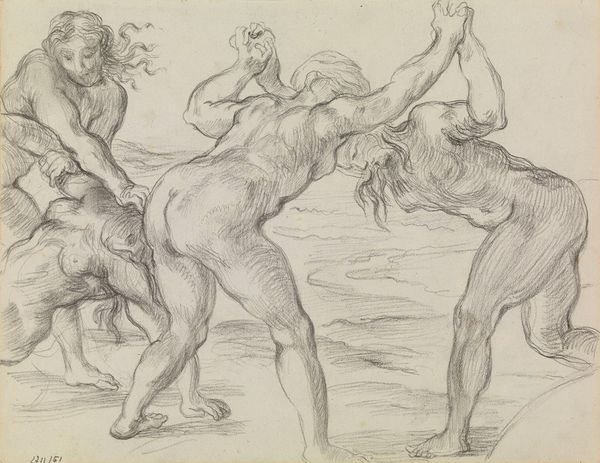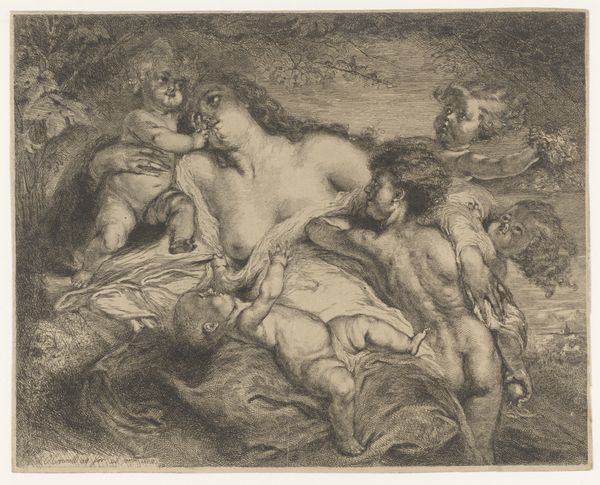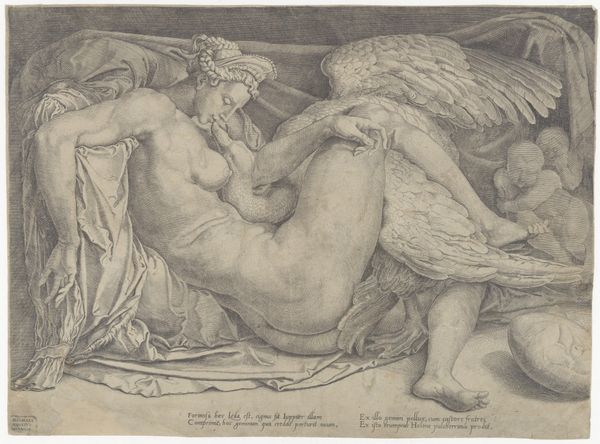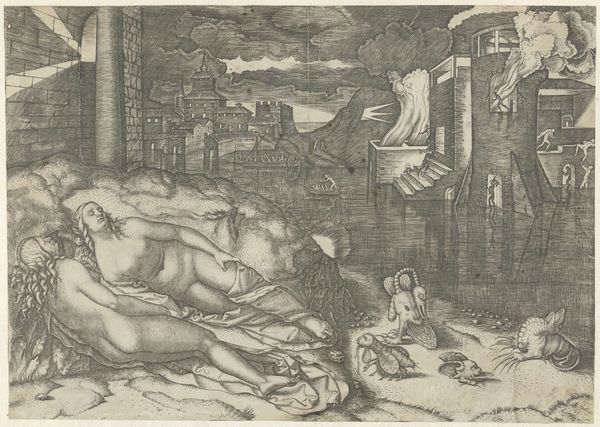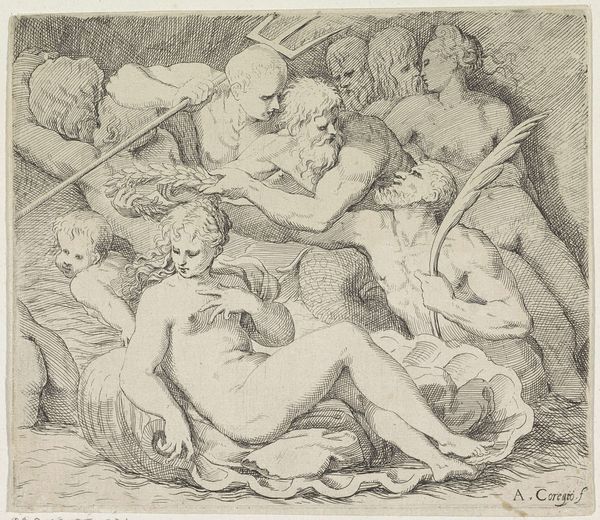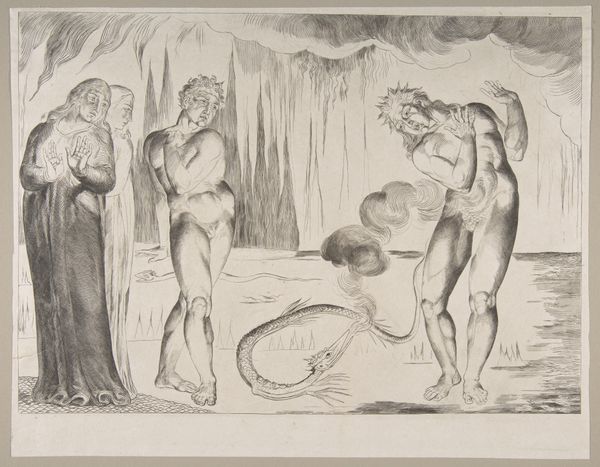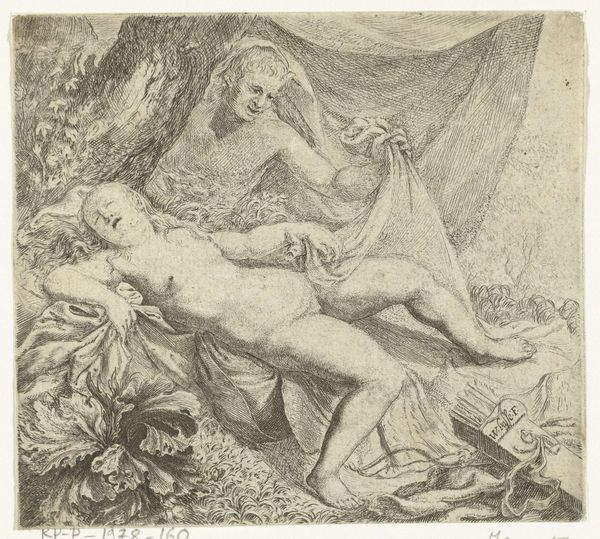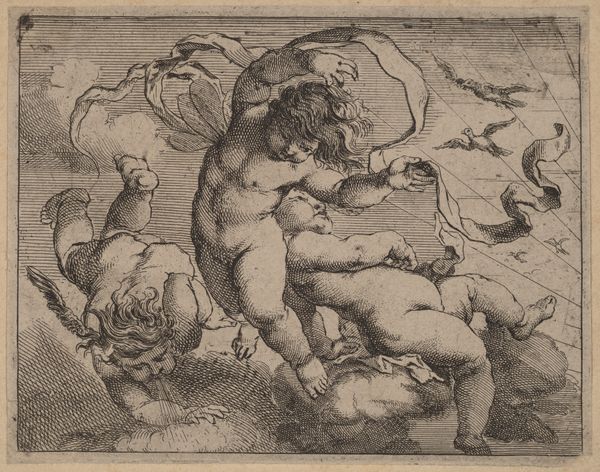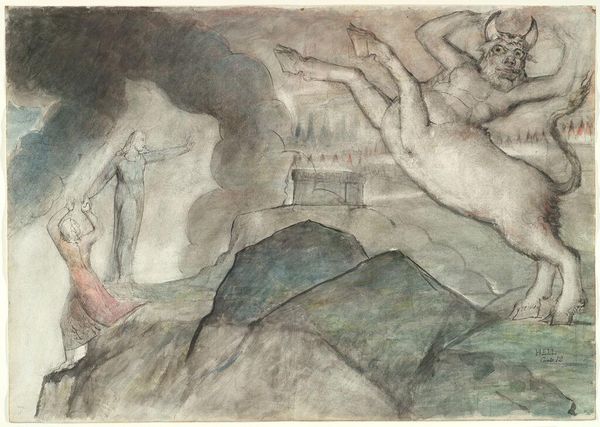
Dimensions: support: 372 x 527 mm
Copyright: NaN
Editor: This is "The Punishment of the Thieves" by William Blake, currently in the Tate Collections. I'm struck by the contorted figures and how they seem to melt into the background. What do you see in Blake's composition? Curator: I observe that the serpentine forms mirror the thieves themselves. Notice how Blake uses line and wash to create a sense of fluidity, blurring the distinction between human and reptile. Editor: So the snakes are almost extensions of the human figures, visually speaking? Curator: Precisely. Consider, too, how the lack of strong tonal contrast contributes to the overall feeling of decay and moral ambiguity. The formal elements reinforce the thematic content. Editor: That's a powerful connection to make. Thanks! Curator: My pleasure. It’s in analyzing these visual relationships that we come to understand the artist's intent.
Comments
http://www.tate.org.uk/art/artworks/blake-the-punishment-of-the-thieves-n03364
Join the conversation
Join millions of artists and users on Artera today and experience the ultimate creative platform.
The heavy musculature of these female figures creates a gender ambiguity that may have implied moral degeneracy to a 19th-century audience. The contorted central body offers a parody of the graceful contraposto of classical statues, while the other cropped or truncated figures lounge about licentiously. Dante describes the thieves being bitten by snakes, creatures that Lavater associates with ‘cunning and treachery’. Here, however, the snakes appear to emanate from the women’s genitals, suggesting that their criminal activity has given birth to an aberration. Gallery label, March 2011
